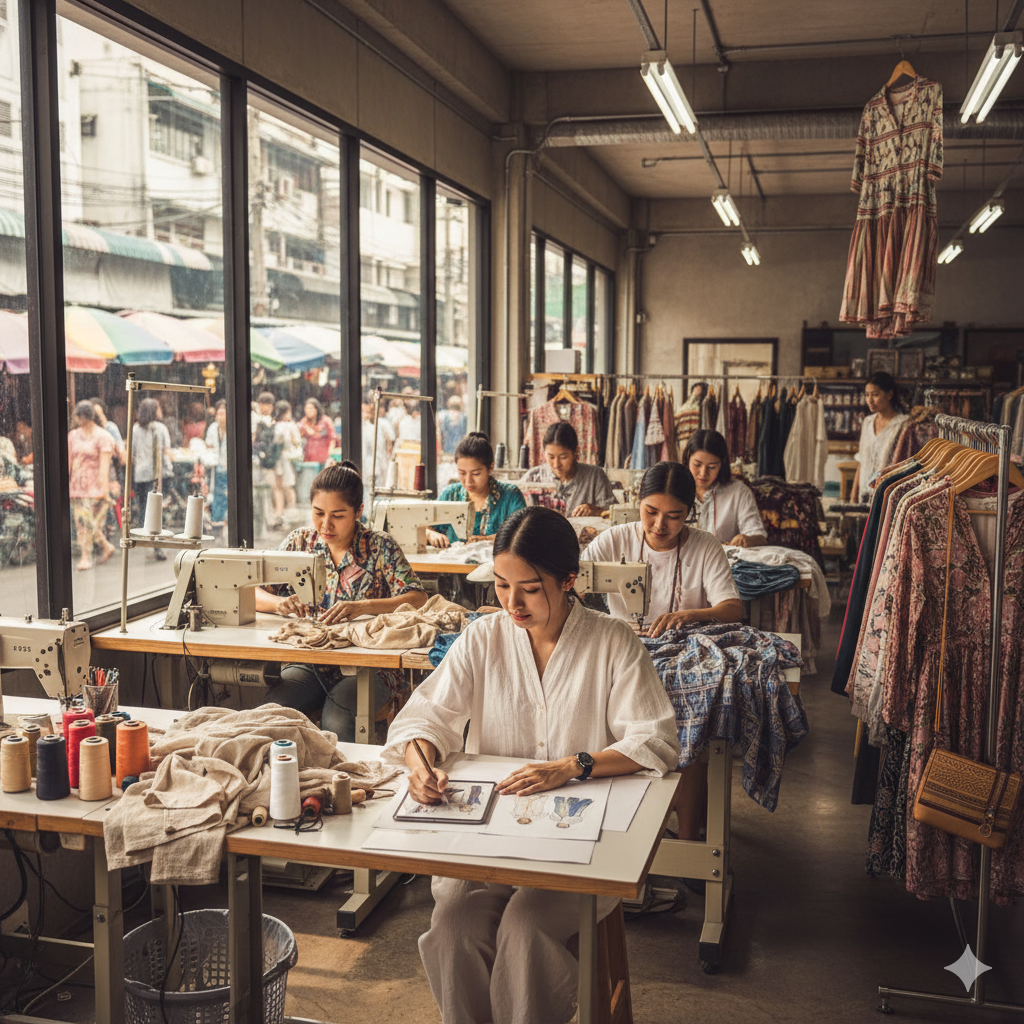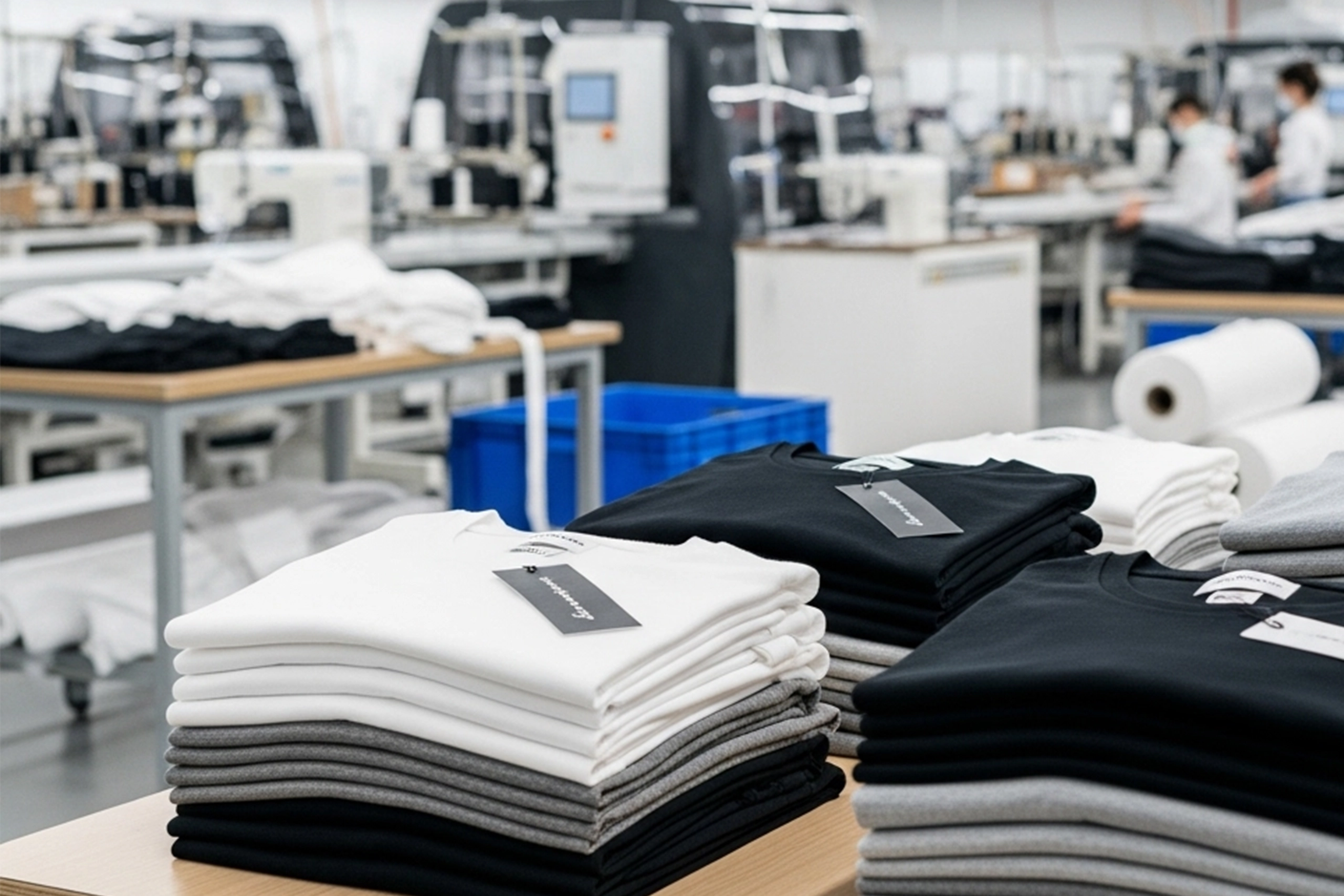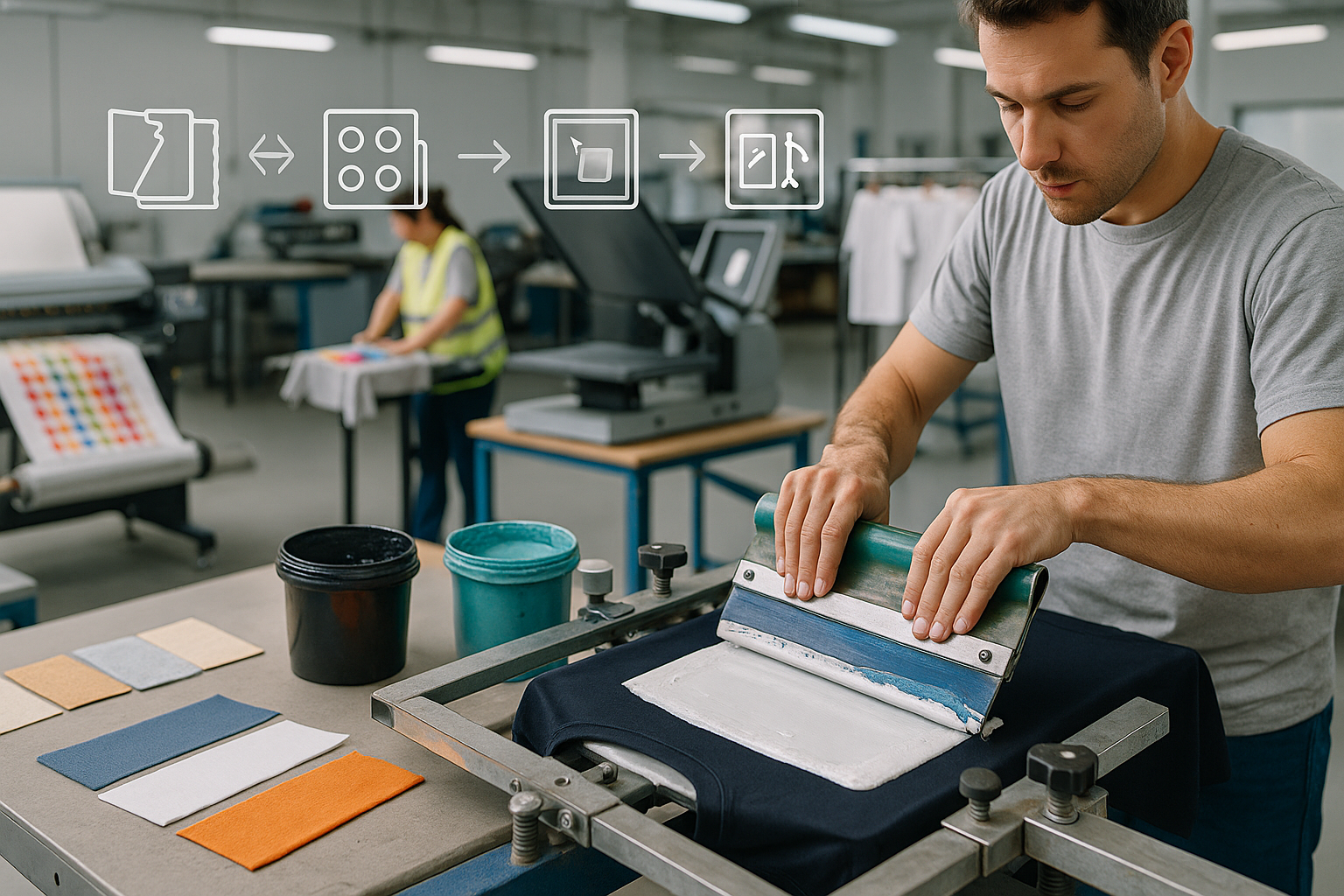Screen Printing When choosing the right technique for your project, consider the fabric type, design, color count, quantity, and turnaround timeframe, just like a garment factory and T-shirt manufacturer would. When you get it right from the start, your T-shirts will be sharp, durable, cost-effective, and easy to handle. Ideal for wholesale or expanding line sizes, such as TopForever brand T-shirts.
Starting a Screen Printing Process in a T-Shirt Factory
Start with the fabric. Cotton, CVC, and TC offer a natural feel and breathability, ideal for the fashion and general uniform products handled by a T-shirt screen printing service. Polyester or technical athletic fabrics work best with sublimation, ensuring vibrant, long-lasting colors without bulk and enhancing comfort. For dark or opaque fabrics, apply a base coat first to prevent color bleeding and match approved color tones.
Match the design and color count to the process.
Printing 1-2 solid colors in the same location? Silk screen printing offers sharpness and cost-effectiveness, especially when printing large-scale images, gradients, or multi-color artwork with low volumes/multiple patterns. Opt for DTF printing for flexibility, fast setup, and finer color detail, ideal for experimental collections. Small-drop or express promotional printing by garment manufacturers.
Ink, Durability, and Total Cost
For a lightweight, soft, and premium fashion experience, choose a water-based or release ink. For solid, sharp colors that are washable on dark fabrics, use Plastisol. Always bake at the appropriate temperature and time to ensure true color “set” and prevent cracking or peeling.
Save money by considering the big picture, such as block preparation, inks, labor, waste, packaging, and stickers. For projects over 300 pieces, silk screen printing reduces the cost per piece and is ideal for wholesale t-shirts. For small-scale, multi-size, and multi-pattern printing, DTF reduces setup and speeds up the decision-making process. It’s ideal for market testing before expanding production with your t-shirt screen printing service partner.
Files are important: Specify the actual size, use a 300 DPI raster, and prepare your logo/line art in vector format (AI/SVG/PDF). Specify Pantone or attach a color reference in advance. Maintain a line width of ≥ 0.3–0.5 mm, and position your artwork away from seams, wrinkles, or glue for smooth printing. For quality control, Test the wash cycle for 5–10 cycles and check for edge sharpness, consistent film thickness, and consistent placement across all sizes.
Summary of the formula for selecting screen printing techniques in one go
- 1–2 solid colors + high volume → Silkscreen
- Graphics/Gradients + low volume/multiple patterns → DTF
- Light-colored polyester sportswear → Sublimation
- Light on dark fabric → Plastisol + base
- Soft handfeel → Water-based/Water-based
Ready to start working with a T-shirt factory that handles both branded and wholesale T-shirts? Talk to our team about our T-shirt screen printing services to determine the right technique for your next heat transfer—including lines like TopForever branded T-shirts—for durable, cost-effective, and ready-to-sell designs from the first batch.




